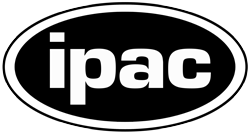There are many opportunities for scientists to work on Roman data, both through NASA funding calls and Calls for Proposals, and to participate in the Roman mission through Science Teams and Working Groups.
Calls for Proposals
In addition to the Core Community Surveys (High Latitude Time Domain Survey, High Latitude Wide Area Survey, Galactic Bulge Time Domain Survey), somewhat more than 25% of the 5-year prime mission will be reserved for General Astrophysics Survey programs. There will be an annual Call for Proposals to apply for funding for data-driven investigations using already-planned and existing observations. Three of the annual Calls will also include an opportunity to apply for new observing programs. Selections will be made through a peer-reviewed process.
The first Call for Proposals for Roman is expected to occur in late 2025, deadline expected to be in March 2026. For more information, see Observations.
Roman First Look Observations
When fully operational in 2027, Roman will provide the astronomical community with an unparalleled opportunity to conduct high-resolution, wide-field surveys at near-infrared wavelengths. To debut Roman to the world, the Roman Project will pursue a program of "First Look Observations" which will be among the first images and spectra taken during observatory commissioning. These observations are intended to have high impact and mass appeal for a public audience. They should also be of scientific value. The Roman Project welcomed the collective expertise of the astronomical community and invited suggestions for First Look Observations using the Wide Field Instrument (WFI).
Science Teams and Committees
Three categories of Science Teams support the Roman project through the NASA ROSES 2022 and 2024 Calls for Proposals. These are the Project Infrastructure Teams (PITs), the Wide Field Science (WFS) teams, and the Coronagraph Community Participation Program (CPP). Two of the PITs are based at Caltech/IPAC in Pasadena, CA: The Roman Galaxy Redshift Survey PIT, led by PI Yun Wang (Caltech/IPAC) and the Roman Alerts Promptly from Image Differencing (RAPID) PIT, led by PI Mansi Kasliwal (Caltech), with pipeline development and management at IPAC. Additionally, there is Caltech/IPAC participation in the Roman HLIS Cosmology PIT, led by Olivier Dore (JPL), also in Pasadena. A number of scientists at Caltech/IPAC are participants in WFS teams, the CPP, and other PITs. See IPAC Roman community participation. Community engagement with all of these teams is key to the successful accomplishment of their support goals.
Scientists from around the world also participated in the Core Community Surveys definition committees, as well as the definition committee for the Early-Definition Galactic Plane Survey. The Roman Observatory Time Allocation Committee (ROTAC), which considered the recommendations from the definition committees, included astronomers from various subdisciplines and expertise as well.
Roman Working Groups
A number of Roman Science and Technical Working Groups are available for scientists to volunteer to participate in and help guide the Roman mission, including on topics such as Calibration, External Synergies, Observation Strategies, Photometric Redshift, Time Domain, Simulations, and Software. To sign up to join a Working Group, visit this page (a MyST login at STScI is required).
Roman Science User Panel
The Roman Science User Panel (RSUP) will represent the broader science user community of Roman, providing feedback, suggestions and advice on behalf of users to all elements of the Project. Specifically, the User Panel will: Comment on the services and support provided by all elements of the Project, Project Science Office at GSFC/NASA, Science Operations Center at STScI and Science Support Center at IPAC, advising on improvements, adjustments and additions to those services where needed; Identify and report on challenges and opportunities facing the community using or accessing Roman data; Provide feedback on Roman data services under design or development; Comment on policies and programmatic aspects of Roman science management; Assess the efficacy of communication channels used to reach the community, and suggest improvements as needed; Submit two written reports per year to the Science Support Center, Science Operations Center, and Project Science Office, to be made available to the community and to NASA, summarizing their input and suggestions to the project. The RSUP should reflect the breadth of science enabled by Roman, as well as the variety of institutions, career stages, and backgrounds of the Roman user community.
Roman Science Collaboration
The goal of the Roman Science Collaboration is to amplify the science returns from the Roman mission and the benefits of Roman science investigations to the astronomical community, by sparking collaborations and drawing on the creative insights and talents of researchers with complementary interests and expertise.
Join the Roman Science Collaboration!
